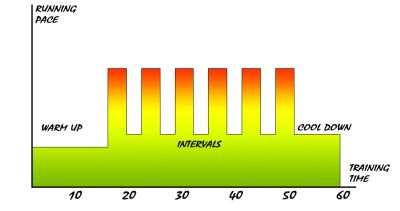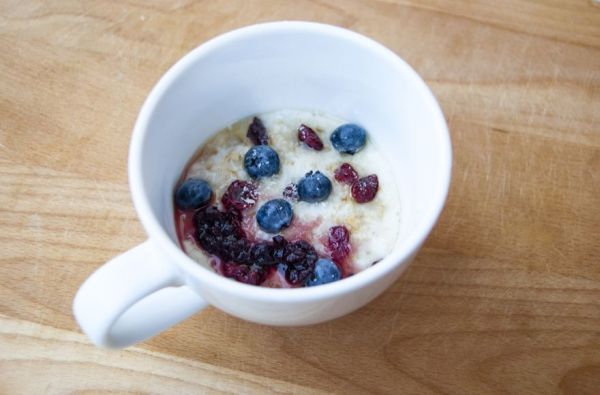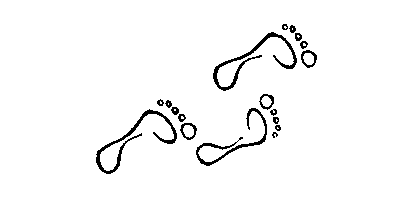How to run to lose weight? How soon do we begin to burn fat? How to eat properly? Is running on an empty stomach good? These and other questions nag people who reach for running as a way to lose weight. And isn’t it true that most of us began running for that reason in the first place? Me certainly! In this article you will learn everything you need to safely lose weight and maintain good health and fitness.
I myself got rid of nearly 20 kg of residual fat with the help of running. From the beginning I decided that I will do it slowly, so as not spoil my health. I spent days browsing the internet and reading about how to lose weight safely. I read about nutrition, various exercises, mechanisms of our metabolism, etc. I gathered tons of knowledge that at some point could be arranged into a work plan. The results turned up fast and I knew that I was on the right track.

WEIGHT LOSS
Weight loss – Is, generally, the process of losing body mass. The problem is that we stand and bathroom scale and count only the kilograms, without making any distinction, whether it is adipose tissue, muscle mass or body water that decreased. Failure to identify the source results in that, basing on this generalization, we are offered many restrictive diets and „weight-loss” drugs that actually cause dehydration and burn muscle tissue, only slightly reducing body fat. We are delighted that our weight decreases, whereas in fact we’re damaging our health. Furthermore! When we finish our diet, or a packet of pills, the fat returns, but the muscles tissue do not grow back on its own. The result is that we go back to the old weight, but we have less muscle and more fat. This leads to an increase in body fat percentage (muscle to fat ratio, or active to inactive tissue ratio).
Our body is genetically programmed to adapt to all conditions. Drastic reduction in calorie intake vs. expenditure leads to a number of processes in the organism: decrease in the nervous system activity, drowsiness, muscle catabolism (breakdown) and decrease in the level of catecholamines (that increase fat breakdown). All these mechanisms are aimed at saving energy stocks (i.e. fat) and decreasing energy expenditure (slower metabolism). In english, our body adapts to lack of food (i.e. does everything to save its „energy storage” – fat – for a rainy day) – we lose weight, but by reducing the muscle tissue and body hydration, with little or no body fat reduction. So, the more restrictive the diet, the more we hurt ourselves, and the greater and more damaging will the yo-yo effect be.

IS IT POSSIBLE TO LOSE 10KG/MONTH?
Sure it’s possible. Only that, it’s not muscle and water that we want to lose, but the excess fat, right? Unfortunately, losing 10 kg/month by reducing the amount of fat is impossible.
Suppose that our body draws 100% energy from fat (it’s only a hypothesis – this never happens in real life). To burn 10 kg of fat, you need a 90 000 kcal (1g of fat provides ~ 9kcal). 90 thou. kcal divided by 30 days is 3000 kcal/day – such would have to be a caloric deficit per day. The average daily energy requirement of an adult is 2000-2500 kcal/day. The conclusion is simple. One would have to not only eat nothing during the day, they would still have to increase energy expenditure by 500-1000 calories/day.
The decrease in body fat by 1 kg/month would require a caloric deficit of 300 kcal/day (this is a viable and healthy assumption). So for a healthy weight loss, a realistic scenario is to burn fat at a rate of approx. 1-2kg/month (greater deficit would result in slowing down metabolism and negative consequences described above).
To sum up – proper and healthy weight loss should be moderate and take into account both appropriately selected diet (quantitatively and qualitatively) and increase in physical activity. I wrote about assessing your daily energy requirement here. In a matter of physical activity, running is the best option :-)
HOW TO BURN FAT WITH RUNNING
First of all – start running. Once it becomes a regular habit and you’re able to carry out a continuous running workout of around 40-60 minutes, you can begin thinking about various modifications.
Let’s assume that you’re already running and you want to customize your workouts to burn fat most effectively. We have to consider many elements now: time and intensity of your workout, the point at which the body starts to burn fat, time of workout (morning or evening), whether to run on an empty stomach or after a meal, etc. Each of these elements has an impact on how the body reacts.
RUN LONG OR RUN FAST
As always, there are two approaches. We can carry out long, slow runs in aerobic zone (more about training zones here) or short but intensive interval trainings. Both burn calories very effectively, although they differ fundamentally.
LONG AND EASY RUNNING:
While running in aerobic zone (i.e. with pace at which we are able to talk freely), the body draws a lot of energy from fat. The longer the run, the greater the fat participation in consumed energy. Therefore, the most important thing is to run long and with moderate effort.
Beginner runners are not able to run continuously for a long time. Depending on what stage you are, you can realize continuous, easy runs, or you can interweave running with periods of march. With this method, each workout can be prolonged and with each subsequent training you will accustom your body to longer effort and after some time reach a full hour workout. If even a few minutes run is too much for you, start with a brisk walk or Nordic walking. No matter how good or bad shape you’re in, you can always find a pace that will make you sweat but not leave you breathless in seconds.
If you are already carrying out continuous running workouts, focus on lengthening your training time rather than on speed. You want to spend as much time as possible in motion, not to quickly cover your distance. More intense exercise will increase the use of carbohydrates accumulated in the blood and muscles, and reduce the fat participation.

INTERVAL TRAINING:
During the interval training we put our body to very high intensities and by that we burn loads of calories in a very short time. Such training requires covering even a dozen or so sets of intensive short runs intermitted with recovery jogs. It is very exhausting for the body and requires a longer break for a full recovery.
In fact, during intervals our body burns primarily carbohydrates, but that’s not what is important here. The training itself causes such a strain that besides the energy burned during the run, an increased oxygen demand maintains for many hours after the effort has stopped. Even up to 48 hours! And while we are recovering after a hard workout, our body constantly burns calories, and most of them are drawn from the very adipose tissue.
Interval workouts are, however, reserved for advanced runners. Even professionals approach these training sessions carefully and do not carry out several workouts of this type in a row. If you are a beginner, categorically choose a long, easy running.

AT WHICH POINT YOU START BURNING FAT
There is a myth saying that body begins to burn fat begins after approx. 30 minutes of running. This is an oversimplification. The truth is, that regardless of the effort level, the body always draws energy from both carbohydrates (actually glycogen) and fat, but in various proportions. Indeed, for the first 20-30 minutes the participation of fat does not exceed approx. 20% of the energy drawn, yet it is used in small quantities right from start. As the time goes by, the fat share increases (provided that we stai in the aerobic zone, i.e. we can easily chat during the run) until after about 60 minutes, the proportions are reversed and up to 80% of the energy is drawn from fat. Thus, if your goal is to burn fat, you should aim at a calm, approx. 40-minute (or longer) workout.
RUN MORNINGS OR EVENINGS
It is a very individual matter, often independent of us – we just adapt to our work schedule and we have no rela choice here. If, on the other hand, you can choose when to train, you should do it in the morning. It is then, that our metabolism works faster and is more efficient.
In the evening, it slows down and your body will first drew energy from glycogen, which circulates in the blood after the last meal (even if you ate a few hours ago) – therefore it is harder to „dig” into the stored fat.
RUN ON AN EMPTY STOMACH OR AFTER A MEAL
There is a saying that „fat is burned in the flame of carbohydrates”. Our body is a hybrid drive construct. It has various power sources and i uses them all simultaneously, but in different proportions. Carbohydrates constitute a kind of catalyst for fat burning, so it’s not enough that we have a lot of fat reserves, sufficient even for running a dozen marathons – nothing of it, if we don’t feed our body with a carbohydrate snack.
In general, we always have a reserve of glycogen in your body (muscles and liver) sufficient for approx. 90-100 minutes of running. This means that, in theory, we can safely carry out morning, easy run even on an empty stomach. On empty stomach, our body should reach more willingly for the fat reserves (in the absence of other fuel). However, I rather advise against running entirely on an empty stomach. According to the above mentioned saying, it is much more effective to provide a catalyst (carbohydrates) to obtain a better „fuel mixture”. Without glycogen, the body handles fats, but a lot worse, and at the same time it reaches for the protein found in our muscles, which is easier to use as energy than fat. And it won’t hesitate.
I myself happen to wake up at 5:00 in the morning for a workout – what to do in sucha a case? After all, I won’t eat a solid breakfast and wait 1-2 hours until my stomach is so kind to finally digest everything. In such a situation, at least reach for a light carbohydrate snack, eg. a banana or a few chocolate pieces and go. You won’t load your stomach too much and you get the „flame” needed to melt the fat.

WHAT TO EAT BEFORE AND AFTER WORKOUT
BEFORE WORKOUT:
Physical exercise activates a number of processes in the body. If we provide a well-chosen food, we will achieve the best possible result, and recovery will happen very fast and we will be ready for another workout. If you are going on a very early training, have at least a banana, a few chocolate pieces or at least drink some sweetened tea. It is important that we provide fast carbohydrates, nourish our brain (hungry after the night) and set body going. If, however, you do have a little more time, aim at the pre-workout meal about 2 hours before training. Your stomach needs that amount of time to digest everything and transfer needed compounds to blood, where the body first draws energy substrates from.
As regards the composition of our meal, it should contain a good mix of carbohydrates (both simple and complex) and protein. Simple carbs (most suitable are are fruits and juices) will be a fast catalyst from which the body can draw from the very first minutes of training. Complex carbd (good sources are groats, whole-wheat pasta and bread) release energy slowly, so they will provide small doses of energy throughout the whole workout, while protein will protect muscles during harder workout. The best sources of protein are lean dairy products (milk, yoghurt, cottage cheese, soy, legumes, eggs, and lean meats for the carnivores)
Examples of pre-workout meals:
- oat muesli with yogurt and raisins
- oatmeal with fruit
- millet pudding with nuts and raisins
- whole grain bread with butter/margarine, cottage cheese and tomato
- Whole grain pasta with spinach and ricotta cheese

AFTER WORKOUT:
First of all, start with a glass of water or isotonic to replenish fluids that were lost with sweat during the run. As regards food, you should in fact treat yourself to two meals. The first should be consumed as soon as possible after training and should consist of simple carbohydrates as a quick „shot” of energy for the body, which rapidly begins the recovery process. This could be, for example a banana or a vegetable/fruit shake.
The second meal should be more complex. During training the body consumes most of the vitamins A, B1, B2, C and E, sodium, calcium and magnesium. To these elements you should pay special attention. B vitamins affect the oxidation of carbohydrates, vitamins A, C and E are responsible for combating free radicals, produced in the body during exercise, while calcium and magnesium regulate the rate of regeneration after exercise. Therefore, it is important to replenish shortage in these elements for faster and more efficient return to shape after workout. Our post-workout meal should also contain a lot of protein, essential to rebuilding muscle fiber, in which microdamages occur during exercise.
The best time for this meal is approximately one hour after the workout. However, if you run in the evening, you shouldn’t load your stomach with big, carbohydrate dinner just before going to sleep, because you probably won’t manage to digest everything and your body will store the what was left in the form of fat. In such a situation, you can eat e.g. an omelette with mushrooms, carrots and peas – you’ll provide adequate amounts of protein and vegetables ensure well enough amount of carbohydrates and nutrients.
Examples of post-workout meals:
- buckwheat with cheese and fried onions
- brown rice with a fried egg and boiled broccoli
- Whole grain pasta with tofu and vegetables
- whole grain bread with hummus

WEIGHT LOSS TIPS & TRICKS
- Plan your diet with a deficit of approx. 300-500 kcal/day and arm yourself with patience
- Run regularly
- Run long and with moderate effort; preferably at least 40 minutes at a heart rate approx. 65% of maximum heart rate (HRMax)
- Morning workouts will give better slimming results
- Do not run on an empty stomach; have a bite of banana at least
- after workout try to eat two meals: carbohydrate snack, and an hour later a well-balanced meal
- search for additional possibilities for training during the day – every calorie counts. Climb the stairs instead of using the elevator or run up to the bus stop.
- drink up 2-3 liters of water a day – preferably cool water.
- on a dinner dinner vegetables have priority. The principle is half/half: half a plate of vegetables, and the other half for all the rest (potatoes, meat, rice, etc.)
- the very act of eating requires burning of approx. 10% of the energy supplied. Therefore, eat less, and more often – preferably every 2,5-3 hours. Higher fiber content in fruit/vegetables will provide a feeling of satiety for longer
- we have the fastest metabolism in the morning, and in slows down during the day. Therefore, „eat royal breakfast like a king, lunch like a prince and dinner like a pauper”.
- before noon the body copes better with fruit, full of simple sugars. In the afternoon, eat more vegetables, which have fewer calories, but more fiber
- hot spices, like curry, chili and tabasco, boost up metabolism by as much as 30%
- drink unsweetened coffee and tea. One teaspoon of sugar is approx. 40 kcal. If you use sugar at the moment, slowly reduce the amount or temporarily replace it the sweetener. Sugar clog the taste buds – with time you will start to feel new flavors
- Drink herbal teas (not sweetened of course) before bedtime. They boost up metabolism and regulate digestion
- fry in oil instead of butter or lard – and preferably eat more cooked, baked and grilled dishes
- thoroughly chew each mouthful. The saliva contains enzymes that begin digestion process already in mouth, assisting the stomach. Therefore, do not sip while eating – this way you only reduce your digestive ability.
- Eat dinner at least 2,5-3 hours before bedtime. The stomach has time to deal with the majority of food and you’ll rest better.
- if you must eat something after dinner, do not reach for popular caloric bombs. Have some yoghurt, which contains live bacterial flora and helps break down heavy food ingredients
- remember that your weight loss depends on you and you only! Don’t tell others that you’re doing everything in your power, and the weight is not falling. If you want hard enough, it will begin to fall
If You find this article interesting, please share It using the social media buttons under the article. If you don’t want to share it, maybe at least like it?
—————–
Sources:
Traczyk, W.Z. (ed) 2001. Fizjologia człowieka w el. fizjologi stosowanej i klinicznej. PZWL
Kalat, J.W. 2007. Biologiczne podstawy psychologii. W-wa:
PWN Ziemlański, Ś., Niedźwiecka-Kącikowa, D. 1997. Zalecenia żywieniowe i zdrowotne dla sportowców. COS
Keller, J.S. 1996. Zarys bioenergetyki człowieka – homeostaza organizmu dorosłego. SGGW
Murray, R.K., Granner, D.K., Rodwell, V.W. 2006. Biochemia Harpera. PZWL
Skarżyński Jerzy, 2012. Biegiem przez życie. MEGA SPORT Jerzy Skarżyński



